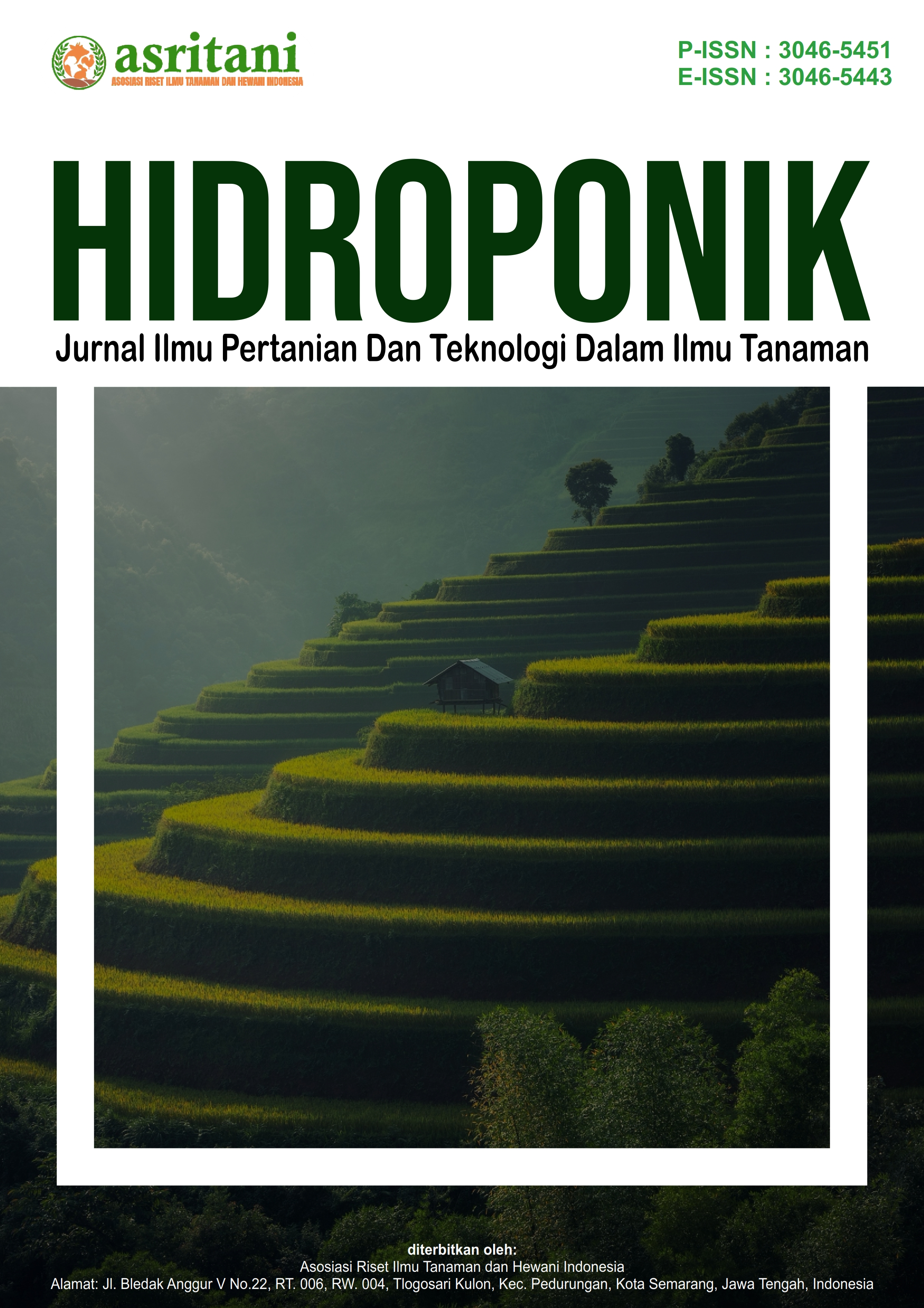Potensi Rhizobium dalam Meningkatan Efisiensi Fiksasi Nitrogen untuk Kesuburan Tanah : Kajian Literatur
DOI:
https://doi.org/10.62951/hidroponik.v2i1.228Keywords:
Rhizobium Bacteria, Nitrogen Fixation, Soil FertilityAbstract
Soil fertility is an important element in agricultural sustainability, especially in supporting plant growth. One natural way to increase soil fertility is through Biological Nitrogen Fixation (FNB) by Rhizobium bacteria. These bacteria have a symbiotic relationship with legume plants, forming root nodules that convert atmospheric nitrogen into compounds that plants can absorb, such as ammonium (NH4+). The purpose of this article study is to determine the potential of Rhizobium bacteria in increasing and efficiency of nitrogen fixation which has an impact on soil fertility and increasing plant productivity. This study adopts a library research method or approach, which involves a series of systematic activities, starting from collecting data through various library sources, reading in depth, recording important information, to processing the research materials. The study results show that Rhizobium can reduce dependence on chemical fertilizers, increase soil fertility, and produce growth hormones that support nutrient absorption. These findings emphasize the important role of Rhizobium in supporting sustainable agriculture, especially in tropical regions where access to synthetic fertilizers is minimal.
References
Dewi, I. R. (2007). Fiksasi N biologis pada ekosistem tropis. Program Pasca Sarjana Universitas Padjadjaran Bandung. Halaman 37-38.
Hamdi, Y. A. (2002). Application of nitrogen fixing systems in soil improvement and management. FAO Soil Bulletin. FAO and Agriculture Organization of The United Nations.
Ihtiramiddi, B. M., Rahayu, S., & Syaban, R. A. (2024). Pengaruh inokulasi Rhizobium sp. dan konsentrasi pupuk kalium fosfat terhadap produksi serta mutu benih kedelai (Glycine max L. Merrill). In Agropross National Conference Proceedings of Agriculture, 13-14 Juni 2024, Politeknik Negeri Jember.
Koryati, T., Fatimah, F., & Sojuangan, D. (2022). Peranan Rhizobium dalam fiksasi N tanaman legum. Jurnal Penelitian Bidang Ilmu Pertanian, 20(3), 8-17.
Novriani. (2011). Peranan Rhizobium dalam meningkatkan ketersediaan nitrogen pada tanaman kedelai. AgronobiS, 3(5), 35–42.
Sari, R., & Prayudyaningsih, R. (2015). Rhizobium: Pemanfaatannya sebagai bakteri penambat nitrogen. Info Teknis EBONI, 12(1), 51–64.
Silalahi, A. (2009). Pengaruh inokulasi Rhizobium dan pupuk posfat terhadap pertumbuhan dan produksi kedelai (Glycine max L. Merril). Skripsi. Fakultas Pertanian, Universitas Sumatera Utara, Medan.
Siti Aisyah, Y., Nurhayati, D., & Hadi, S. (2020). The role of Rhizobium in improving nitrogen fixation efficiency. Journal of Green and Sustainable Technologies, 9(2), 58-65.
Suharjo, U. J. K. (2001). Efektifitas nodulasi Rhizobium japonicum pada kedelai yang tumbuh di tanah sisa inokulasi dan tanah dengan inokulasi tambahan. Jurnal Ilmu-Ilmu Pertanian Indonesia, 3(1), 31–35.
Supriyadi, S. (2017). Community of practitioners: Solusi alternatif berbagi pengetahuan antar pustakawan. Lentera Pustaka: Jurnal Kajian Ilmu Perpustakaan, Informasi dan Kearsipan, 2(2), 83. https://doi.org/10.14710/lenpust.v2i2.13476
Takanashi, K., Sugiyama, A., & Yazaki, K. (2011). Involvement of auxin distribution in root nodule development of Lotus japonicus. Planta, 234, 73–81.
Zuchri, A. (2006). Dampak penambahan Rhizo-plus terhadap perubahan perbintilan akar tiga varietas kedelai. Sainteknol, 10(2), 101–108.
Downloads
Published
How to Cite
Issue
Section
License
Copyright (c) 2025 Hidroponik : Jurnal Ilmu Pertanian Dan Teknologi Dalam Ilmu Tanaman

This work is licensed under a Creative Commons Attribution-ShareAlike 4.0 International License.





